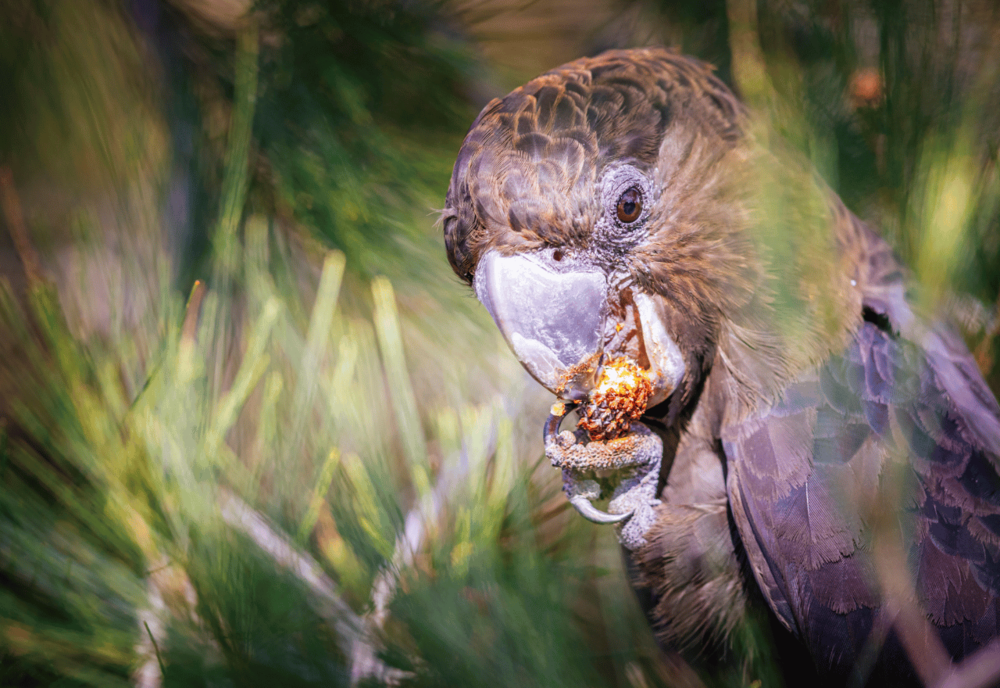Help bring back the Glossy Black
Kristin Murdock
25 January 2023, 8:40 PM
 Western Plains locals are encouraged to get involved in the project to bring back the Glossy Black-Cockatoo.
Western Plains locals are encouraged to get involved in the project to bring back the Glossy Black-Cockatoo. Glossy Black-Cockatoos are being encouraged back into the local region, thanks to the planned installation of 35 nest boxes on public and private land.
Local Land Services, in collaboration with Charles Sturt University and Habitat Innovation & Management have been instrumental in the "Bringing back the Glossy-Black" project, after a successful application to WIRES.
Central Inland NSW is home to a significant, distinctive but declining Glossy Black-Cockatoo population concentrated in forest and woodland areas stretching from Parkes to Narrabri.
Based at Dubbo, Land Services Officer Libby McIntyre, is enthusiastic about the project.
"Glossy Blacks are currently found sporadically through the Pilliga and Goonoo Forests and also Goobang. The issue with them thriving is the availability of their food source of casuarinas and Allocasuarinas and their need for tree hollows to nest in."
Senior Land Services Officer with Local Land Services, Katie McPherson, said the nesting box program represents an incredible opportunity for a recognised research institution to partner with Local Land Services in delivering the first project in the world that will implement the revolutionary new Habitech Glossy Black-Cockatoo nest boxes.
The nest box is manufactured for the exact specifications the Great Glossy Black-Cockatoo. This includes depth and width of the hollow, angle and features of entrance spout.
“This project will fund critical work needed to recover breeding populations of the threatened Glossy Black-Cockatoo,” Ms McPherson said.
Mick Callan, Ornithologist and Principal Ecologist from Habitat Innovation & Management said the Glossy Black-Cockatoo is listed as vulnerable in New South Wales.
“Due to the impact of the 2019-20 mega fires, it has recently also been added as a threatened species under the Federal Environmental Protection and Biodiversity Conservation Act,” Mr Callan said.

The removal of trees that provide the food source for the vulnerable cockatoo is a key issue.
A major threat to the survival of the Glossy Black-Cockatoo is habitat loss – the clearing of Allocasuarina trees in woodland areas that provide a food source, and the loss of mature eucalypts for nest hollows.
Environmental advocate and co-founder of Dubbo Indian Myna Control Program , Ms Margaret McDonald said she had previously been aware of Glossy-black cockatoos in the Goonoo Forest and Piliga Forests. Ms McDonald is instrumental in eradicating the introduced Indian Myna birds in the region and said these invasive species were another threat to the Glossy-black.
"Myna birds are a definite threat for these cockatoos," she said. "They are incredibly vicious, even to larger birds and take over the habitat of native birds."
Ms McDonald and her group are undertaking a continual program to trap and dispose of Mynah birds which will be welcome news to the Glossy-Black enthusiasts.
“Through research and monitoring of nesting activity in the nest boxes, we hope to gain increased understanding of the specific ecological requirements of these birds when selecting a nest site,” Professor David Watson, Ornithologist and Ecologist from Charles Sturt University said.
The project also aims to educate local landholders about the plight of the Glossy Black-Cockatoo, through a targeted engagement campaign that will include two educational field days to be held in 2023 in the Local Land Services regions of the Central Tablelands and the Central West
The Great Inland Glossy Count will take place in February, where, in a single day, Glossy Black numbers are recorded in local areas.
Local landholders are encouraged to become involved with the project. For further information, Ms McIntyre can be contacted on [email protected].




